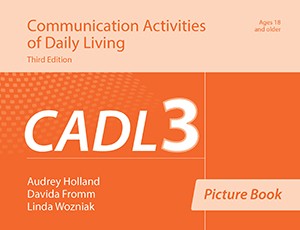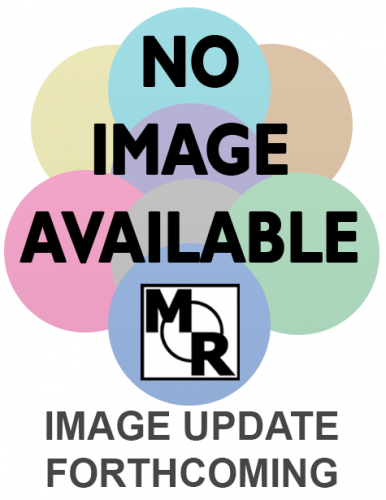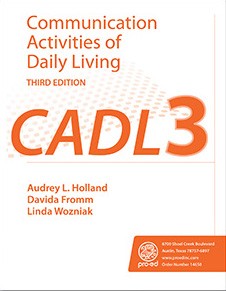Communication Activities of Daily Living (CADL-3)
Complete Kit
- Ages 18 - 95+
- Testing Time 30 minutes
- Administration Individual
-
Product Code 14650 ( MR #066534 )
* Qualifications required to purchase this item. Click here to complete the qualifications form.
Price $294.00
Contents
-

Communication Activities of Daily Living (CADL-3)
CADL-3 Examiner's Manual
$83.00 -

Communication Activities of Daily Living (CADL-3)
CADL-3 Picture Book
$116.00 -

Communication Activities of Daily Living (CADL-3)
CADL-3 Examiner Record Booklets (25)
$59.00 -

Communication Activities of Daily Living (CADL-3)
CADL-3 Patient Response Forms (25)
$40.00
- Reading, Writing, and Using Numbers
- Social Interactions
- Contextual Communication
- Nonverbal Communication
- Sequential Relationships
- Humor, Metaphor, and Absurdity
- Internet Basics
- Stimulus book illustrations have been replaced with photos, allowing for a greater sense of realism.
- Administration instructions have been added to the Examiner Record Booklet to increase examiners’ ease of use.
- Items pertaining to the basic use of technology including mobile phones, the Internet, and email, have been added.
- An all-new standardization sample (2014–2016) was collected.
-

Communication Activities of Daily Living (CADL-3)
CADL-3 Examiner Record Booklets (25)
$59.00 -

Communication Activities of Daily Living (CADL-3)
CADL-3 Examiner's Manual
$83.00 -

Communication Activities of Daily Living (CADL-3)
CADL-3 Patient Response Forms (25)
$40.00 -

Communication Activities of Daily Living (CADL-3)
CADL-3 Picture Book
$116.00
- Copyright 2018

 Proud to be Canadian
Proud to be Canadian